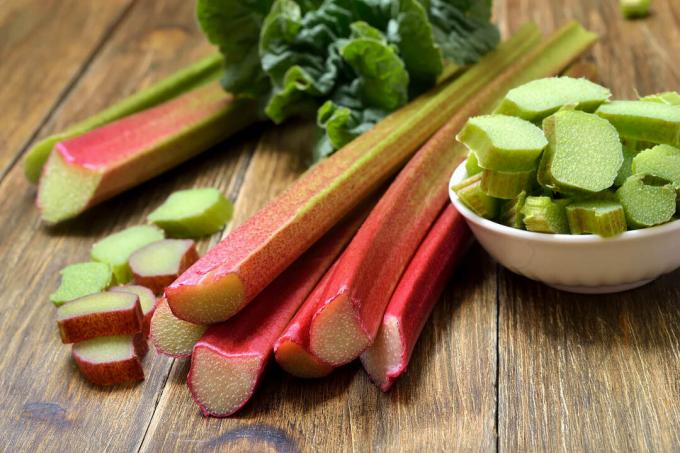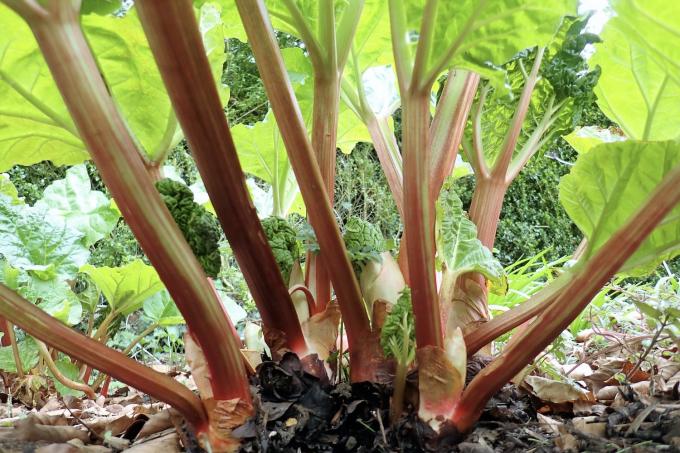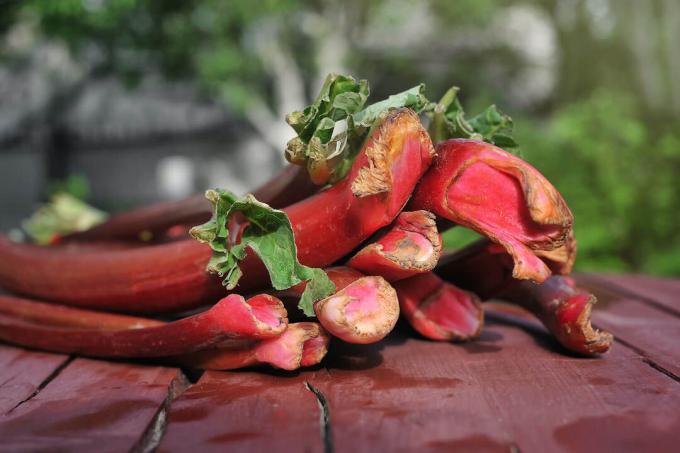Rhubarb is a seasonal vegetable. Due to the increasing oxalic acid content, many are unsure how long the spears can be harvested.

rhubarb (Rheum rhabarbarum) is mainly on the menu in spring and early summer – then it is traditionally rhubarb season and therefore also harvest time. In this article we will tell you how best to harvest rhubarb, when is the ideal time to harvest and what else you should consider when enjoying rhubarb. There are some myths about the right time to harvest rhubarb. We have therefore compiled our best tips for you below.
Harvest time of rhubarb
Rhubarb is generally not harvested until the second year after planting. The harvest time then starts from the second year in April and lasts until St. John's Day (April 24). June) on. You should then no longer harvest your rhubarb - and for two reasons: Firstly, to avoid the to allow the plant a period of rest and recovery, and on the other hand due to the increase in the oxalic acid content.
Ripe rhubarb stalks can be recognized by the fact that the leaf tissue has stretched between the ribs and that Whole leaf is no longer rippled and crumpled, but looks wide and flat and unfolds completely Has.
notice: People suffering from iron deficiency should not eat foods containing rhubarb with or immediately after other meals. People suffering from gout, rheumatism, arthritis or kidneys should generally be cautious about eating rhubarb, as it is one of the foods containing oxalic acid (this also applies to spinach, Beetroot, chard, Etc.).

tip: By the Forcing and bleaching the rhubarb the time of harvest can be brought forward. You can find out exactly how this works here in our special article.
Harvest rhubarb properly
Carefully twist the rhubarb stalks out as far as possible at the base. You should make sure that you do not cut off any parts of the rootstock. Cutting the stalks is not recommended, as the cutting points can easily get diseases into the plant or cause it to rot. The young buds in the leaf axils are also more easily injured by deep cutting than by twisting them out. After unscrewing, it is important to remove the leaves as well, because these and the rootstock are slightly poisonous and inedible. In general, you should only take as many stems from the plant at a time as you currently need. In this way, the plant still has enough leaves to be able to continue photosynthesis and thus energy for further growth. This is also important because you will probably want to keep the plant in the garden for a few more years. You can harvest around 6 to 8 kg of rhubarb from a mature rhubarb plant with a diameter of one square meter.
Summary of harvesting rhubarb:
- Carefully twist out the rhubarb stalks
- Remove leaves as they are poisonous
- Harvest only as much as you need
- Ideal harvest time between April and the end of June

Tip: The leaves of the rhubarb contain active ingredients with which you can treat stem wounds on fruit trees and aphid infestation and prevent fungal diseases. An extract, as a vegetable broth or a whole leaf that is rubbed on wounds, quickly unfolds the antibiotic effect of tannins, oxalic acid and anthraquinones.
Now that you've harvested your rhubarb, there are a number of ways to preserve it. Here we share with you how to Freeze and cook rhubarb can.
